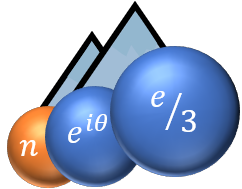Anyons are exotic quasiparticles that can carry a fraction of the charge of an electron and, most strikingly, obey a braiding statistics different from that of fermions and bosons. Although the fractional quasiparticles charge is experimentally well established in the fractional quantum Hall regime, revealing unambiguously their unconventional statistics is more challenging.
Recently, a large attention was set on the so-called `collider' approach, involving upstream sources of quasiparticles impinging on a central quantum point contact. The resulting current cross-correlations between the two outgoing paths is predicted to depend on the nature of the quasiparticles. I will present such measurements performed in the integer and fractional quantum Hall regimes and discuss their significance. The large negative cross-correlations signal observed at fractional filling factor 1/3 for symmetric sources provides an evidence of anyon statistics. Yet a quantitative connection with the braiding phase, predicted to be 2Pi/3, is impeded by unconventional behaviors of the quantum point contacts. A negative signal, although substantially smaller, can also observed at integer filling factor 2, with the symmetric sources now emitting dilute beams of electrons. In this case, the negative cross-correlations can be understood either in an electrons framework, from the redistribution of energy, or in a magnetoplasmons framework describing electronic excitations as neutral and charged density modes distributed among the two copropagating edge channels.

 PDF version
PDF version
